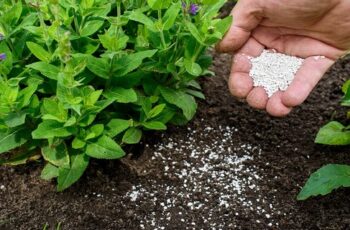Ad Blocker Detected
Our website is made possible by displaying online advertisements to our visitors. Please consider supporting us by disabling your ad blocker.
Along with green onions, garlic is one of the best health-promoting plants you can grow at home. It’s super easy and super cheap. You may not like the taste and smell, but eating a whole bulb of garlic a day does wonder for your body.
Garlic is a simple food that has strong healing properties. Garlic is rich in nitrogenous substances, sodium, potassium, selenium, calcium, magnesium, silicon, sulfuric acid, phosphoric acid, vitamins C, D, and B, phytosterols, extracts, and essential oils.
It contains a phytoncide called allicin, which is formed during the mechanical destruction of plants, which means that you must crush or grind your garlic to get the maximum benefits of this component.
Researchers believe that allicin has a powerful bacteriostatic effect, which heals infections more quickly. Garlic is packed with antifungal agents, making it much more potent compared to many antibiotics used today.
How to grow an endless supply of garlic indoors
several garlic bulbs (or heads)
organic potting soil
1 planting pot
First, a word of warning!
Much of the garlic sold in grocery stores is processed with a hormone that prevents the cloves from sprouting in order to extend their shelf life.
For best results, use organic garlic or wait until you see the garlic start to sprout on its own, often forming root nubbins at the same time. If you look closely, you may even see cloves sprouting at the store!
Instructions:
Use only good heads of garlic.
Take a large pot and fill it with soil.
Separate the cloves and place them vertically to a depth of one inch.
Cover the cloves with an inch of soil. Keep the pot in an area that gets full sun.
Water the pot when it begins to dry out, as with any houseplant.
Cut the greens when they are 3-4 inches tall and leave an inch so they can grow back.
Take note of this as well:
At some point, the greens will stop growing. When they dry out and turn brown, detach the cloves and each one should have formed a full bulb. Take a clove from that bulb and start all over again.
When to plant garlic
In the fall, plant cloves in well-drained beds after the first frost and the soil is cold. Cloves can also be planted in late winter as soon as the ground thaws, but garlic planted in the fall produces larger better quality bulbs.
Garlic likes a lot of moisture but will start to develop yellow leaves if left wet for too long. Since garlic likes the cold, experimenters in zones 9 to 11 might choose to match another variety. On the bright side, you can also grow elephant garlic following the same instructions. In general, it’s much more effective than its smaller cousin in warmer climates.

